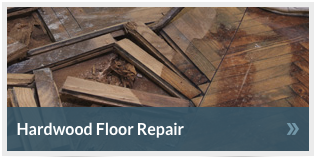Most Popular Hardwood Floor Stain Colors For Traditional Homes
Hardwood floors are more than just a surface to walk on—they’re a foundational design element that contributes to the warmth, charm, and character of traditional homes. In Baltimore, where many houses date back to the 19th and early 20th centuries, preserving that historic feel while enhancing your home’s elegance often starts with selecting the right stain color for your floors. Whether you live in a Federal Hill rowhouse, a stately Victorian in Roland Park, or a colonial-inspired home in Perry Hall, the stain color you choose can significantly impact the feel of your space. Below, we explore the most popular hardwood floor stain colors for traditional homes and how each enhances timeless architectural details.
The 5 Most Popular Hardwood Floor Stain Colors For Traditional Homes
Why Stain Matters in Traditional Interiors
Staining hardwood floors does more than add color. It enhances the grain, adds depth and tone, and can completely change the feel of a room. Traditional homes often have intricate woodwork, crown molding, and vintage detailing, all of which benefit from a cohesive color story grounded in the flooring. Choosing the right stain ensures your floors not only look beautiful but also complement historic architectural features without feeling outdated or mismatched. And in a place like Baltimore, where charm and character are prized, the right stain can make a huge difference in tying the home together.
1. Warm Honey and Golden Oak
These classic, medium-toned stains are perennial favorites in traditional homes. Honey and golden oak bring out the natural warmth of the wood while enhancing its rich, organic grain patterns. These tones work exceptionally well in homes with cream-colored walls, ornate trim, or antique furniture. They brighten darker interiors—a common feature in older Baltimore homes—without sacrificing that traditional charm.
Best suited for: Living rooms, foyers, and spaces with natural or amber lighting.
2. Rich Walnut and Chestnut
If you’re looking to add elegance and sophistication, rich walnut and chestnut tones are a perfect match. These deeper brown stains convey a sense of history and age gracefully over time. In homes with darker wood furniture, vintage rugs, or paneled walls, these stains create a harmonious and grounded appearance. They’re particularly popular in formal dining rooms, studies, and historic homes where the goal is to enhance the period feel.
Best suited for: Libraries, dining rooms, or homes with dark trim and built-ins.
3. Mahogany and Cherry
Stains with red undertones, such as mahogany and cherry, create a sense of warmth and tradition. These colors evoke classic luxury, often seen in historic Baltimore brownstones or Georgian-style homes. The reddish tones complement traditional oriental rugs and period-style upholstery beautifully. However, it’s important to note that red tones may darken over time or become dominant in overly lit areas, so lighting and furniture pairing are essential.
Best suited for: Hallways, formal living rooms, and homes with historic detailing.
4. Provincial and Special Walnut
Neutral, versatile, and timeless, Provincial and Special Walnut are two of the most popular choices for homeowners who want a traditional look that still feels fresh. These stains have just the right amount of warmth to showcase the natural wood grain while offering a subdued, elegant finish. They pair well with everything from colonial-style furnishings to modern updates, making them perfect for traditional homes undergoing gradual renovations.
Best suited for: Whole-home flooring, transitional spaces, and homes with mixed vintage and modern styles.
5. Ebony and Jacobean
For those who want bold contrast and dramatic flair, Jacobean and Ebony stains offer a deep, rich tone that adds instant sophistication. These dark stains work particularly well with white or cream trim, creating a striking balance that feels intentional and upscale. In traditional homes, these colors can elevate a room’s design by highlighting architectural features such as built-in shelves, columns, or wainscoting. Because darker floors tend to show dust more easily, they require a bit more upkeep but make a stunning impact.
Best suited for: Formal spaces, showpiece rooms, or homes with lots of natural light.
Factors Baltimore Homeowners Should Consider
While stain color is largely a matter of personal style, several practical and aesthetic considerations should influence your decision:
Wood Species
Different wood types absorb stains differently. For example:
- Red Oak: Accepts most stains well, with pronounced grain.
- White Oak: Offers a more neutral base and smooth finish.
- Maple and Pine: Can be tricky to stain evenly and may need pre-treatment.
In many traditional Baltimore homes, red oak is a common species used in original flooring—making it ideal for rich, warm stains like Provincial or Chestnut.
Lighting and Room Size
Darker stains can make smaller rooms feel more enclosed, especially in homes with fewer windows. Conversely, light and medium stains can help open up a space and reflect more natural light. If your traditional Baltimore home has high ceilings or larger rooms with ample sunlight, don’t shy away from deeper tones like Mahogany or Jacobean.
Lifestyle and Maintenance
If you have pets or kids, it’s worth considering how much daily wear your floors will get. Mid-toned stains like Golden Oak or Special Walnut do a good job of hiding scratches and dust, while very dark stains (Ebony) can show debris more easily.
Matching Stains with Baltimore’s Traditional Home Styles
Let’s break it down further by common home styles in the Baltimore area:
- Victorian Homes (e.g., Bolton Hill): Rich tones like Mahogany, Walnut, or Cherry work beautifully to highlight elaborate interiors.
- Federal-Style Rowhouses (e.g., Fells Point, Mount Vernon): Golden Oak or Jacobean can complement the narrow, vertical layout and original architectural features.
- Colonial Revivals (e.g., Guilford, Homeland): Provincial and Chestnut work well with symmetrical layouts and traditional furnishings.
- Craftsman Bungalows (e.g., Hamilton-Lauraville): Stick with medium-warm tones like Honey or Special Walnut to enhance the natural woodwork.
How to Sample Stain Colors the Right Way
Before you commit to a stain, it’s essential to test a few options. Baltimore’s varied lighting—whether it’s filtered city sunlight or shaded by historic trees—can affect how a stain looks. We recommend applying sample stains directly to your existing floor or an identical wood panel. Let them dry and observe at different times of day. This helps ensure the color works with your lighting, décor, and overall aesthetic.
Contact Flawless Floor Today for Hardwood Floor Staining in Baltimore, MD
At Flawless Floors, located in Perry Hall, MD, we specialize in custom hardwood floor staining and refinishing for traditional homes throughout Baltimore. Whether you’re restoring century-old oak or updating your home’s look with a fresh stain, we provide expert guidance and craftsmanship tailored to your home’s history and style.
Our team understands the unique architectural elements of Baltimore’s neighborhoods and will help you choose a stain color that complements your home beautifully. From preparation and sanding to final sealing, we ensure your floors look flawless—because that’s what we do best. Ready to transform your hardwood floors? Contact Flawless Floors today to schedule a consultation and let us help bring out the best in your Baltimore home. Your dream floors are just a phone call away.

Sanding & Refinishing

Installation

